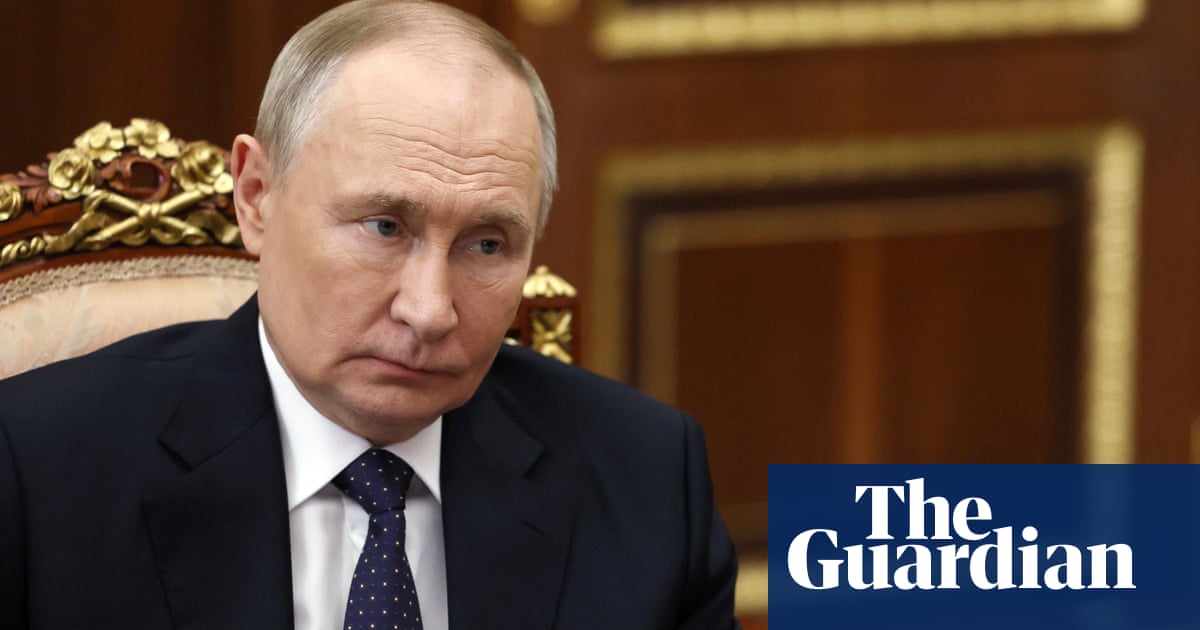Like Chekhov’s gun coming off the wall in Act V, it was probably only a matter of time before Vladimir Putin launched an experimental, nuclear-capable ballistic missile into Ukraine. It is hardly a coincidence that his decision comes as the war approaches a likely endgame, with both sides jockeying for position ahead of negotiations in the shadow of Donald Trump.
Neither Ukraine nor Russia quite knows what Trump will do when he takes office in January. But the escalations taking place now will set a new status quo for the day he becomes president, at which point Trump’s options range from hard-nosed horse-trading to simply throwing Ukraine under the bus.
Ukrainian officials said this week that they simply do not know what the president-elect has planned for them. And with little idea of Trump’s intentions, they are focused on optimizing their battlefield position, seeking to hold a beachhead in Russia’s Kursk region and shore up the frontlines elsewhere across the battlefield to be in as strong a position as possible before the new US administration.
US officials, similarly unsure of what their new president will do, are keen to make Ukraine as self-sufficient as possible and to prepare their European partners to increase support to Ukraine after Biden’s departure. One way some of his administration officials have described the goal is to avoid handing Trump another Afghanistan, where the country’s military collapses as soon as US ceases to provide support. Most are pessimistic that Ukraine can continue the fight indefinitely, however.
In the final months of his term, Joe Biden offered Ukraine one thing it has been clamoring for: the right to use Atacms long-range missiles against targets inside Russia. He has also given Ukraine authorisation to use landmines and the right to send US military contractors in to fix the hardware Ukraine needs to stay in the fight.
None of those are a game-changer, officials have admitted. And Biden’s caution in the months before – when they would have been more useful – was partially dictated by political concerns of a backlash ahead of the election.
Trump could reverse those decisions the first day he arrives in office. But he could also decide that they are useful currency as he goes into negotiations with Putin and, as the more optimistic observers hope, acts in the spirit of a good businessman: to never give something of value away for free.
Biden’s last spurt of support comes with a cost, however. And on Tuesday, Russia sent the west a very clear signal: we can escalate as well. With just a 30-minute warning, Russia launched an experimental missile that appears to be a variant of an older, never-deployed missile, the RS-26, which was originally designed for nuclear-weapon delivery. The missile had been criticised in the past for violating the now defunct Intermediate-Range Nuclear Forces Treaty signed in the late 1980s to prevent a missile crisis in Europe – and its deployment could revive those fears.
Putin sought to look menacing as he gave a rare address on Russian national television on Thursday, threatening to strike western countries involved in the war and claiming that the US and Europe “can’t intercept such missiles”. (If he wanted to make a splash in America, he should have fired his experimental missile another day. US media were firmly focused on Matt Gaetz, Trump’s candidate for attorney general who abandoned his nomination after a series of accusations he had had sex with underage girls).
Nonetheless, the missile was meant to send a message. “I take the launch as a ‘reminder’ to the United States that the risks of nuclear escalation remain present,” said James Acton, the co-director of the Nuclear Policy Program at the Carnegie Endowment for International Peace.
US officials have appeared deliberately sanguine in terms of the nuclear threat in recent days. Despite suddenly closing the US embassy in Kyiv on Wednesday amid warnings of a mysterious “air attack threat,” officials had said they had seen no change in Russia’s nuclear posture. And Russian officials also appeared keen to avoid an accidental escalation with the US by providing a “pre-notification” of the launch.
“That said, Putin’s decision to inform Washington in advance of the test was clearly intended to avoid the it misinterpreting the launch and to mitigate the risks of immediate nuclear escalation,” said Acton. “Indeed, I think it is very unlikely that Putin would use nuclear weapons given Trump’s election and the likelihood that the United States will cease to provide aid to Ukraine.”
US officials had warned that Russia would at least nod toward a nuclear escalation if Biden gave Ukraine permission to use Atacms. CIA chief Bill Burns, on a visit to London alongside the head of MI6 in September, said the US had brushed off a previous Russian nuclear scare in autumn 2022, demonstrating that threats from Moscow should not always be taken literally.
“Putin’s a bully. He’s going to continue to sabre-rattle from time to time,” Burns said. “We cannot afford to be intimidated by that sabre-rattling … we [have] got to be mindful of it. The US has provided enormous support for Ukraine, and I’m sure the president will consider other ways in which we can support them.”

